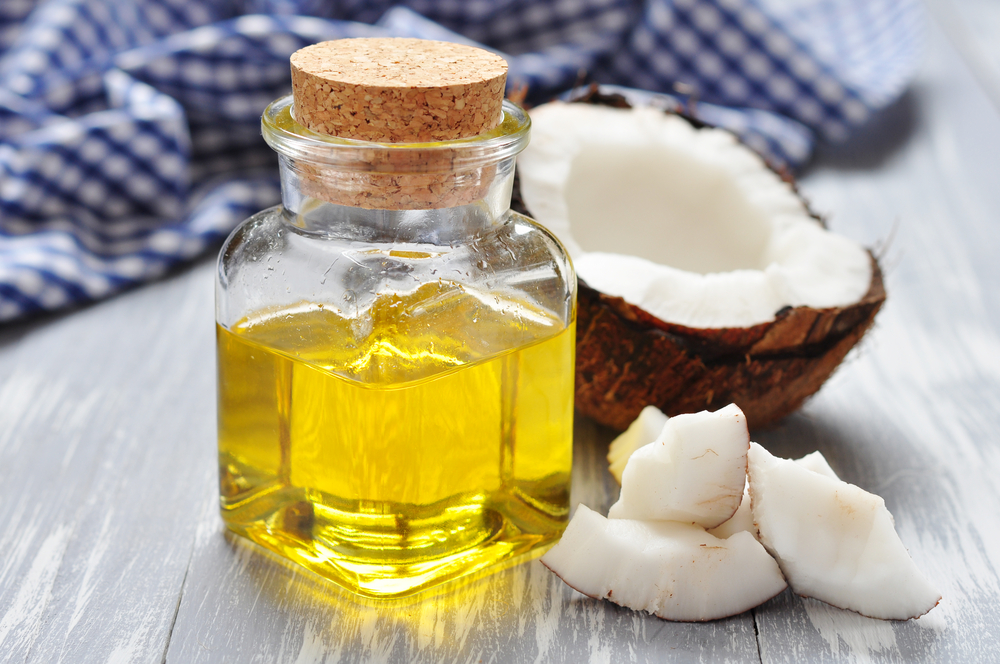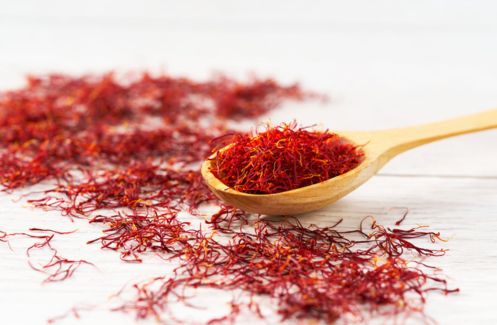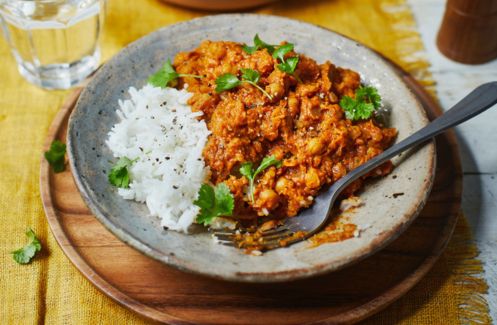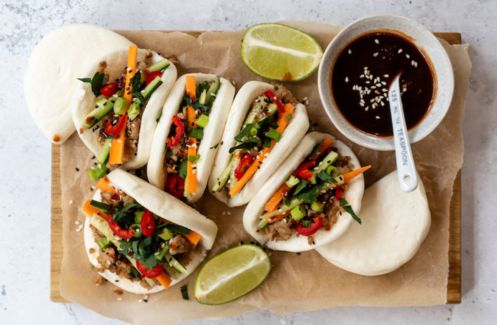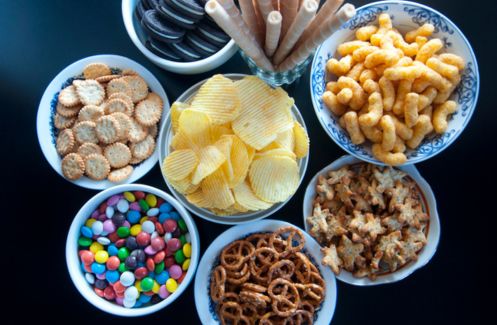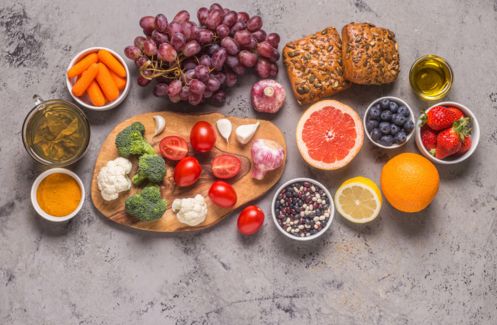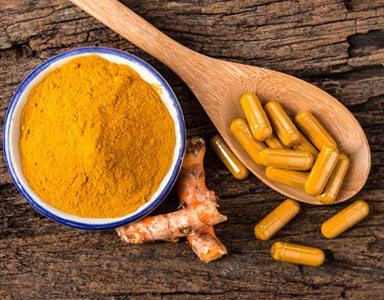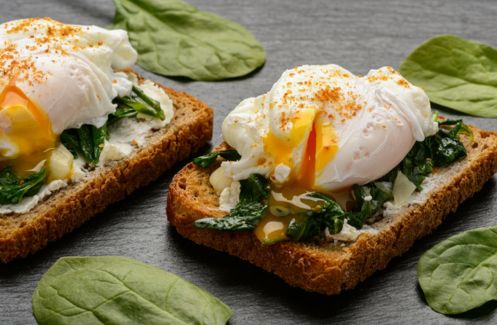When Victoria’s Secret Model, Miranda Kerr shed her baby weight in only six months and credited ‘a spoon full of coconut oil’ for her miraculous weight loss, it confirmed what most nutrition experts already know – the right fats can help you slim. Here Ross Edgley, head sports scientist at THE PROTEIN WORKS looks at the industry’s most fashionable fats and explains why they might help you lose weight.
1. COCONUT OIL FAT (MEDIUM CHAIN TRIGLYCERIDES)
What Is It?
Medium Chain Triglycerides are a special form of fatty acid that are found in coconut oil.
What Does It Do?
Amazingly research published in the International Journal of Obesity found just 400 calories of Medium Chain Triglycerides was capable of increasing your metabolism for at least 6 hours after digesting them. This is far more than other types of fat. Also in a study published in the American Journal Of Clinical Nutrition, Medium Chain Triglycerides (MCTs) were also found to increase the rate at which other fats in the diet were burnt and used for energy. Put simply this means MCTs not only burn fat already on the body but they also help you burn the calories in your diet.
Where To Find It?
Whilst MCTs are found in palm kernel oil and butter, the best source of it is in coconut oil, just ask Miranda Kerr. You can use it to cook all your food with (great for sit-fries and curries), use it as a form of dressing on salads or you can even put a spoonful in your warm porridge in the morning to set you up for the day.
How Much Do I Need?
There isn’t actually a recommended daily allowance of MCTs in the diet but weight loss experts typically recommend up to 1-3 table spoons a day to promote fat loss.
2. CONJUGATED LINOLEIC ACID (CLA)
What Is It?
Conjugated Linoleic Acid (CLA) is a form of fatty acid that’s been shown to alter the way our body’s burn and store fat.
What Does It Do?
Experts believe CLA’s fat loss properties come from its ability to attack fat through two different mechanisms; firstly research conducted at the University of País Vasco found that conjugated linoleic acid interferes with a substance in your body called lipoprotein lipase, which aside from various other roles in the body is mainly responsible for storing fat in the body. Further research found that CLA actually helped the body use its existing fat for energy. Therefore studies show CLA not only inhibits the storing of fat it also enhances the burning of fat.
Where To Find It?
Conjugated Linoleic Acid is mainly found in beef, cheese and other dairy products. The only problem is it’s only found in these foods in very low doses which is why many experts recommend taking a pure form of CLA in the form of a supplement. 120 CLA soft gels are available from THE PROTEIN WORKS £14.99.
How Much Do I Need?
Experts typically recommend between 3-5 grams per day.
3. OMEGA 3
What Is It?
Omega 3 is an essential fatty acid (EFA) found in fish oils. Essential fatty acids are made up of EPA (eicosapentaenoic acid) and DHA (docosahexaenoic acid) which are both long chain fatty acids that have been shown to provide a number of health benefits including reducing the risk of heart disease and improving brain function. But even more recently fish oils have actually been shown to help to help reduce body fat.
What Does It Do?
Weight Loss experts from the University of South Australia in Adelaide found that omega 3 supplementation actually increased the amount of fat obese men and women were able to burn over a 12 week period. It’s believed it does this by improving our body’s ability to burn body fat as a source of energy during exercise.
Where To Find It?
Omega 3 is found in a number foods. These include walnuts, flax seeds and of course most fish which includes halibut, salmon, sardines, tuna and trout.
How Much Do I Need?
Experts usually recommend for optimal health you should aim to consume at least 1 high omega 3 food every day whether that’s in the form of a handful of walnuts or ground flaxseed mixed with your morning oats or a serving of fatty fish. But for those who perhaps don’t get enough food in their diet, there are Omega 3 supplements. A typical fish oil capsule contains 180 mg of the omega-3 EPA, 120 mg of the omega-3 DHA, for a total of 300 mg per capsule and you should aim to consume between 2-3 per day. 90 capsules of Omega 3 is available from THE PROTEIN WORKS for £5.49.
Blankson H et al (2000) ‘Conjugated linoleic acid reduces body fat mass in overweight and obese humans.’ J.Nutr. 130:2943-2948
Roche HM et al (2001) ‘Conjugated linoleic acid: a novel therapeutic nutrient?’ Nutr. Res. Rev. 187
Smedman A (2001) ‘Conjugated linoleic acid supplementation in humans – Metabolic effects.’ Lipids 36:773-781
Lowery L.M et al (1998) ‘Conjugated linoleic acid enhances muscle size and strength gains in novice bodybuilders.’ Medicine and Science in Sports and Exercise, 30.182.
Kreider RB (2002) ‘Effects of conjugated linoleic acid supplementation during resistance-training on body composition. Bone density, strength, and selected hematological markers.’ J Strength Cond Res 2002; 3:325-34.
Berven G (2000) ‘Safety of conjugated linoleic acid (CLA) in overweight or obese human volunteers.’ European J. Lipid Sci.Technol. 102:455;462
Thom E (2001) ‘Conjugated linoleic acid reduces body fat in healthy exercising humans.’ J Int Med Res 2001;29:392-6.
Kamphuis M et al (2003) ‘The effect of conjugated linoleic acid supplementation after weight loss on body weight regain, body composition, and resting metabolic rate in overweight subjects.’ Int J Obesity 2003; 27: 840-847.
Gaullier J et al (2003) ‘Effects of CLA in moderate overweights during one year supplementation.’ 94th AOCS annual meeting and Expo, Kansas, May 2003
C. G. Van Zyl, E. V. Lambert, J. A. Hawley, T. D. Noakes, S. C. Dennis (1996) ‘Effects of medium-chain triglyceride ingestion on fuel metabolism and cycling performance’ The American Physiological Society
Marie-Pierre St-Onge, Robert Ross, William D. Parsons and Peter J.H. Jones(2003) ‘Medium-Chain Triglycerides Increase Energy Expenditure and Decrease Adiposity in Overweight Men’ Obesity Research (2003) 11, 395–402
N Baba, EF Bracco and SA Hashim (1982) ‘Enhanced thermogenesis and diminished deposition of fat in response to overfeeding with diet containing medium chain triglyceride’ American Journal of Clinical Nutrition, Vol 35, 678-682
Ron J Maughan (2005) ‘Role of micronutrients in sport and physical activity’ Department of Biomedical Sciences, University Medical School, Foresterhill, Aberdeen
Theodore B. Van Itallie, M.D. Leonardo Sinisterra, M.D. Fredrick J. Stare, M.D. (1997) ‘Nutrition and Athletic Performance’ The Journal of the American Medical Association
Ron J Maughan (2007) ‘The athlete’s diet: nutritional goals and dietary strategies’ Proceedings of the Nutrition Society
Blixt, G (1965) A Study on the relation between total calories and single nutrients for athletes’ Sociologica et Medica Upsallieusis
Bach, A.C., Ingenbleek, Y., & Frey, A. (1996). The usefulness of dietary medium-chain triglycerides in body weight control: fact or fancy? Journal of Lipid Research, 37, 708-726
Papamandjaris, A.A., White, M.D., Raeini-Sarjaz, M., & Jones, P.J. (2000). Endogenous fat oxidation during medium chain versus long chain triglyceride feeding in healthy women. International Journal of Obesity and Related Metabolic Disorders, 24, 1158-1166
Seaton, T.B., Welle, S.L., Warenko, M.K., & Campbell, R.G. (1986). Thermic effect of medium-chain and long-chain triglycerides in man. American Journal of Clinical Nutrition, 44, 630-634
Like this article? Sign up to our newsletter to get more articles like this delivered straight to your inbox.




